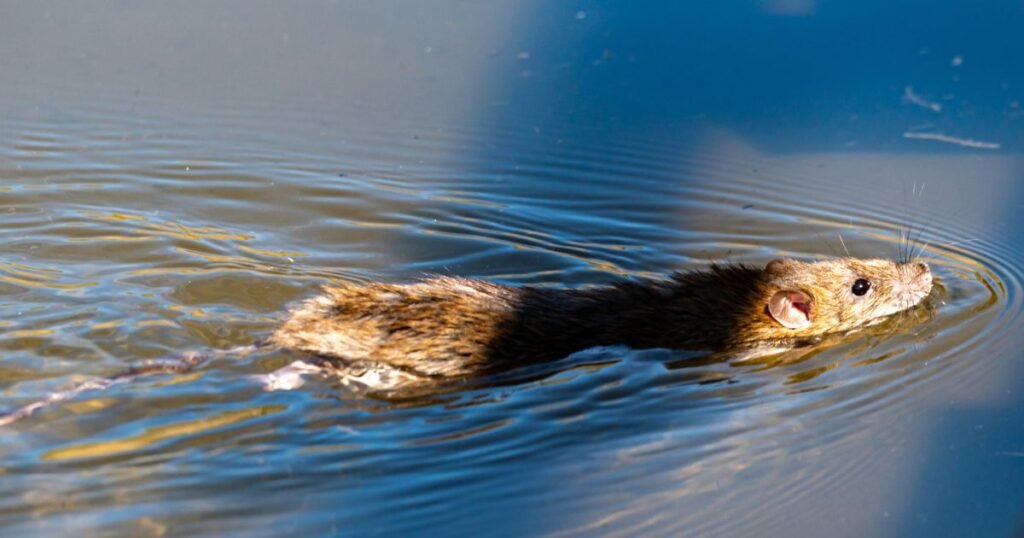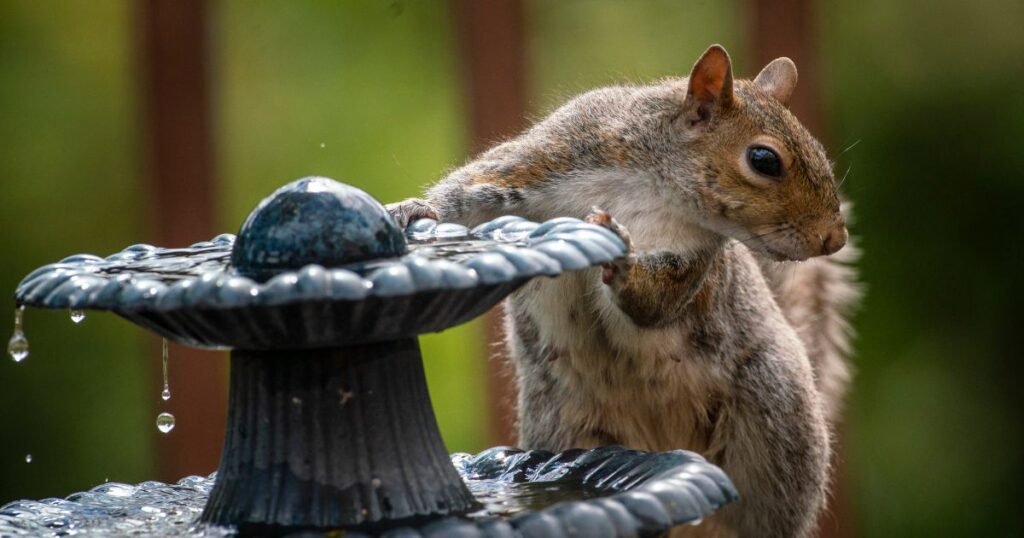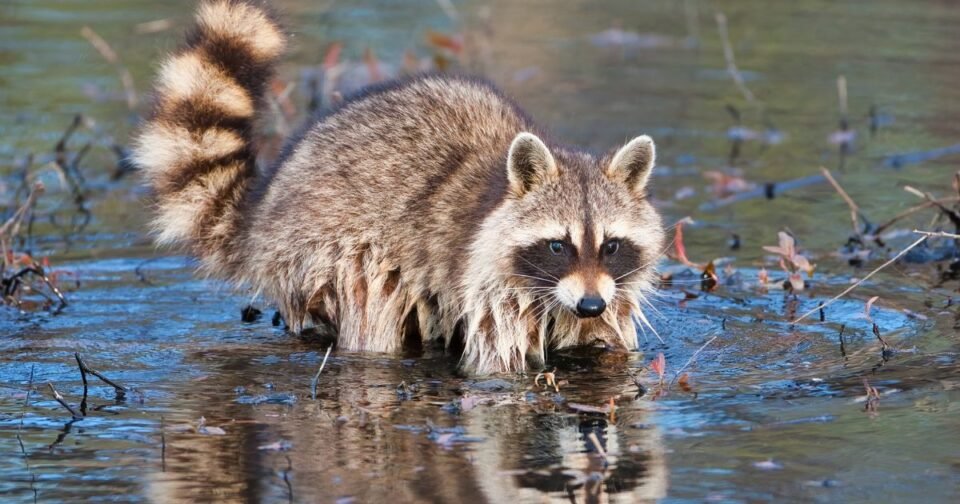When you explore wildlife in humid environments, you encounter a diverse array of species that are uniquely adapted to thrive in high-moisture environments. These habitats, ranging from dense tropical rainforests to humid continental forests, support a diverse variety of animals, including insects, reptiles, birds, and mammals. The constant presence of humidity significantly influences the behavior, reproduction, and survival of these creatures, making humidity a crucial factor in their ecosystems.
In these environments, you’ll find creatures like frogs and snakes in rainforests, which rely on the moisture for their skin and breeding cycles. Similarly, mammals such as bears, wolves, and deer thrive in the humid continental zones, where seasonal changes combine with humid conditions to support rich forests and abundant food sources. This blend of wildlife illustrates the vital role humidity plays in sustaining complex food webs.
Your understanding of humid wildlife habitats deepens as you recognize how species have evolved to use humidity for navigation, thermoregulation, and shelter. Whether it’s insects using humidity cues or amphibians relying on damp soils, each animal’s adaptation is directly linked to the moisture in its environment, emphasizing the tight connection between wildlife and humidity.
Wildlife Behavior and Adaptations in Humid Environments
You will find that many animals in humid regions have developed specialized behaviors and physical traits that enable them to cope with constant moisture and fluctuating temperatures. These adaptations allow them to secure food, evade predators, and reproduce effectively in dense, wet habitats.
Common Wildlife Species in Humid Regions
In humid environments, you encounter a variety of species adapted to moisture-rich habitats. Small mammals, such as squirrels, chipmunks, and raccoons, thrive here. These animals often feed on grasses, insects, and sometimes on scavenged remains.
Reptiles, such as lizards, have evolved unique traits to survive in moist conditions. Mosquitoes, known for their water-repellent scales, can remain active without becoming waterlogged despite the humidity.
You will also find species like West African Dwarf goats in humid zones. They are known for their high feeding efficiency and disease tolerance, which enables them to utilize resources that many other animals cannot.
Adaptations to High Humidity

When you live in a humid environment, your body must prevent waterlogging and maintain function despite constant moisture. Many insects, for example, possess scales or exoskeletons that repel water, which keeps them dry and mobile.
Wild mammals often develop dense fur with oils that provide a water barrier. Behavioral adaptations, such as seeking shelter during heavy rains, are common to avoid oversaturation.
Reptiles exhibit physiological traits, such as cold-bloodedness, to regulate their internal temperature in wet conditions. Some species have evolved efficient breathing and skin structures that work well in high humidity.
Seasonal Patterns of Wildlife Activity
You can observe clear seasonal cycles in humid environments. During wetter, warmer months, many animals increase their activity. For example, small mammals may give birth to larger litters to capitalize on abundant food sources.
Some species hibernate or reduce activity during less favorable periods to conserve energy. This behavior is typical among mammals, such as raccoons and certain rodents.
Migration also plays a role. Many insects and birds time their movements to avoid extreme weather phases and to reach breeding or feeding grounds that sustain them through less productive seasons.
Major Pest and Wildlife Challenges in Humid Climates
In humid climates, you face increased risks from specific pests and wildlife due to constant moisture and warmth. These conditions create ideal breeding grounds, making prevention and management a priority for protecting your home and property.
Typical Pests in Humid Areas
In humid environments, cockroaches, silverfish, and dust mites are among the most common pests you’ll encounter. These pests thrive because they require moisture to survive and reproduce, which is abundant in areas like Dallas during humid seasons. You may also find termites, which cause structural damage by feeding on wood in damp conditions.
Mosquitoes are another prevalent pest because standing water, often caused by humidity, supports their breeding cycle. The warm, moist air helps these pests stay hydrated and active for longer periods, increasing their presence throughout the day and night.
To reduce pest populations, focus on eliminating moisture sources inside and outside your home. Repair leaks, improve drainage, and use dehumidifiers where possible.
Wildlife Entry Points in Humid Conditions
Humidity creates weaknesses around your property that wildlife can exploit as entry points. Moisture weakens wood, causes swelling in materials, and creates gaps around doors, windows, and foundations. Small animals, such as rodents and insects, often enter through these openings.
You should inspect areas such as attic vents, crawl spaces, and under siding regularly. Seal gaps with weatherproof caulking or mesh to prevent wildlife, such as rats, squirrels, or insects, from finding shelter indoors.
Proper maintenance of gutters and downspouts is essential. Blocked drainage can increase moisture near your home’s foundation, attracting pests and wildlife looking for shelter.
Risks of Infestations to Homes and Properties
Pests and wildlife in humid conditions pose several risks to your home. Termites and carpenter ants damage wooden structures, compromising the integrity of buildings. Cockroaches and rodents can contaminate food and surfaces, leading to potential health hazards.
Increased humidity encourages mold growth, which often accompanies pest infestations and worsens indoor air quality. Wildlife entering your home may bring parasites or cause electrical damage by chewing wires.
To effectively manage pests in humid areas, prioritize moisture control and regular inspections. Early detection of infestations ensures you avoid costly repairs and maintain a healthy living environment.
Effective Strategies for Preventing and Managing Wildlife Infestations

Controlling wildlife infestations in humid environments requires a combination of physical barriers, habitat adjustments, and ongoing management techniques. Addressing entry points, modifying surroundings, and utilizing coordinated pest control methods will effectively protect your property, especially in areas like Dallas, where a humid climate makes pest control critical.
Exclusion and Sealing Techniques
Start by identifying and sealing potential entry points to keep wildlife out. Common access points include gaps around windows, doors, vents, and foundations. Use durable materials, such as metal mesh, weather-resistant caulk, or expanding foam, to seal these gaps. Pay special attention to areas where moisture could compromise the integrity of the barriers.
Maintaining these seals is essential in a humid climate for wildlife prevention because damp conditions can cause materials to deteriorate more quickly. Regular inspections, ideally each season, help ensure no new openings appear. Installing door sweeps and window screens also blocks smaller pests, such as rodents and insects common in humid settings.
Environmental Modifications
Altering the environment around your property discourages wildlife from settling nearby. Remove clutter, tall grass, and woodpiles close to buildings, as they provide shelter and breeding sites. Keep mulch layers thin and avoid overwatering plants to reduce humidity at ground level, which attracts moisture-loving species.
Proper waste management plays a key role. Secure trash bins with tight lids and clean up fallen fruit or food scraps promptly. Minimizing accessible food sources lowers wildlife attraction. These steps, when combined, create less hospitable conditions, helping to prevent infestations in humid environments like Dallas.
Integrated Pest Management Approaches
Integrated Pest Management (IPM) combines monitoring, prevention, and control tools to manage wildlife sustainably. Begin by regularly monitoring pest activity to identify issues early. Use traps and visual inspections rather than relying solely on chemical controls.
IPM emphasizes using the least harmful control options first. Biological controls, such as encouraging natural predators, can reduce pest populations without environmental impact. When chemical methods are necessary, targeted treatments minimize risk to non-target species and avoid resistance buildup.
Applying IPM tailored to the humid climate ensures ongoing, effective wildlife control while maintaining ecological balance. This approach is essential for long-term success in managing wildlife infestations.
Call in The Pros to Deal with Wildlife at Home
Dealing with wildlife in humid environments can be a complex task. If you notice persistent signs of animals, such as damage, noises, or droppings, it may be time to call a professional. Experts have the tools and experience to safely and humanely remove unwanted wildlife from your home.
Attempting to handle wildlife on your own can lead to mistakes and potentially serious consequences. Without a clear plan, you may worsen the problem or put yourself at risk. Professionals help by assessing the situation, identifying entry points, and recommending practical solutions tailored to your property.
Key actions to keep wildlife out of your home include sealing all cracks and holes, removing potential food sources, and maintaining a clean environment. Wildlife removal specialists ensure these steps are executed adequately while respecting legal restrictions and animal welfare.
When you call a trusted service, you get more than removal—you gain expert advice on long-term prevention. This reduces the chances of future invasions and protects your home’s structure and your family’s health.
Critter Stop is a reliable option for humane wildlife removal. They offer thorough inspections at no cost and address your wildlife or pest concerns with professionalism and care. Their strong reputation and excellent customer reviews reflect consistent quality and attentive service.
Contact Critter Stop at (214) 234-2616 to schedule your free inspection. Let skilled professionals handle the problem so you can restore safety and peace to your home.

